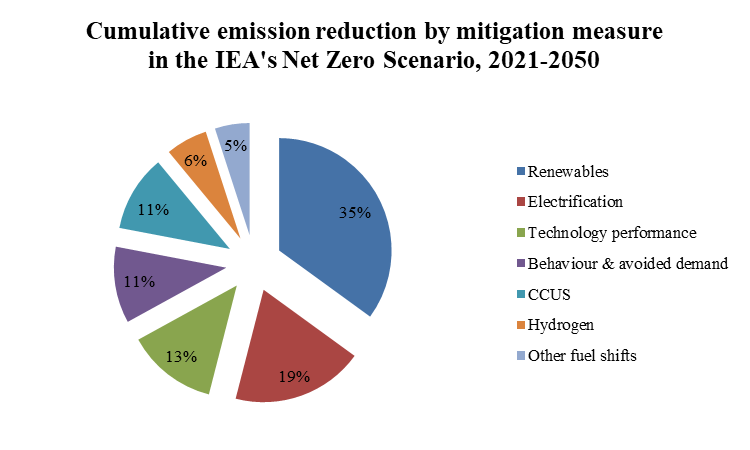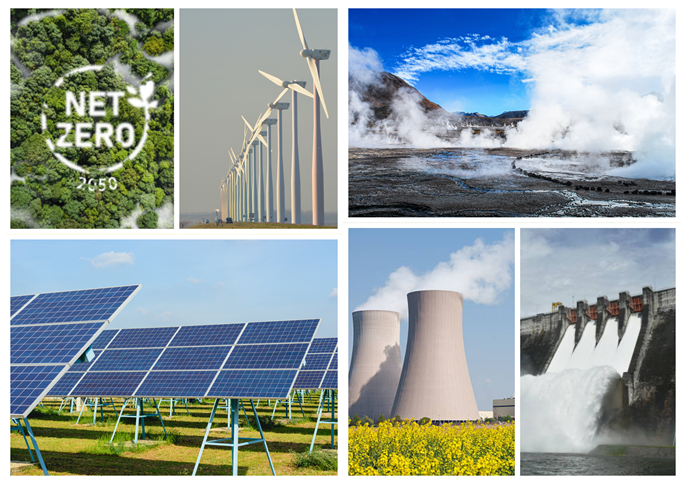Every light you switch on, every device you charge, and every mile you drive contributes to your carbon footprint. In the intricate web of the energy sector, understanding and managing these emissions is crucial for creating a sustainable future. Join us as we explore the vital importance, challenges, and innovative strategies for measuring and reducing carbon footprints in the energy sector.
You must have likely encountered the term “carbon footprint” in various contexts, such as companies aiming to reduce their carbon footprint or businessmen opting for more eco-friendly transportation and not taking flights. Essentially, a carbon footprint represents the amount of carbon dioxide (CO2) emissions generated annually by a specific activity, measured in tons. Carbon footprint measurement is one of the most important tools in controlling the activities that lead to climate change.
Metrics and Management
Carbon footprint measurement and management act as the bedrock for accountability and smart decision-making. With energy production and consumption standing as major contributors to global carbon emissions, it is vital for companies to gauge the extent of their environmental impact. By quantifying carbon footprints, energy entities gain invaluable insights into their operations, paving the way for targeted measures that shrink their carbon footprint.
Difficulties in Quantifying Emissions
From understanding confusing regulatory frameworks to grappling with the countless energy sources, each with its unique environmental impact, and unraveling the tangled journey of energy from production to consumption, the task is formidable. Yet, amidst these complexities, addressing both the visible pollution from energy production and the nuanced emissions from daily consumption demands a collaborative effort. Therefore, through collective action involving companies, governments, and individuals alike, we can strive towards a more sustainable energy future, fuelled by unity and determination.
Proven Techniques for Footprint Analysis
So, how do energy companies navigate this maze of carbon footprint measurement? Here’s where best practices come into play. Firstly, setting clear boundaries and defining the scope of measurement is key to keeping focus and ensuring nothing slips through the cracks. Following standardized methodologies, like those laid out by respected frameworks such as the GHG Protocol, brings consistency and allows for apples-to-apples comparisons. And investing in fancy monitoring tech and data analytics? That’s like giving yourself a superpower – real-time data means timely interventions and smarter decisions. Topping it off with regular audits and independent verification? That’s the cherry on top, boosting confidence in carbon footprint assessments and showing the world you’re serious about walking the talk.
Carbon Emission Reduction Tactics
To effectively curb carbon emissions, we must accelerate the adoption of technologies prioritizing electrification of energy demand and shift electricity supply entirely to renewable sources. The International Energy Agency (IEA) lights the way with strategies for decarbonisation.
Fig 1: showing the contribution of various renewable sources in reducing the carbon emissions

- Electrification: Exciting advancements like electric vehicles and heat pumps are leading the charge in this transition, paving the way towards a net-zero energy system by 2050.
According to the IEA, electrification could contribute a substantial 19% of the cumulative emissions reductions needed for this goal. However, the impact depends on sourcing electricity from low-carbon options such as renewables, nuclear, or thermal generation with carbon capture and storage.
- Renewables: Renewable sources, particularly wind and solar, hold immense promise for delivering plentiful low-carbon electricity. In fact, they could potentially contribute a substantial 35% of the total emissions reductions required for the worldwide shift to net zero.
- Nuclear energy: Nuclear power emerges as a pivotal technology, currently providing almost 30% of the world’s low-carbon electricity supply. Sustained investment in nuclear innovations holds the key to unlocking even greater potential. By introducing advanced nuclear technologies, we can pave the way for nuclear energy to play a crucial role in reducing emissions across the electricity sector, as well as in heat and industry.
Fig 2: Showing the various renewable energy sources currently in use

- Carbon Capture, Usage & Storage (CCUS) : CCUS shines as a key decarbonisation tool, enabling the capture of CO2 emissions from high-emission industrial sites for permanent storage after transportation. It also opens the door to low-carbon methods for generating electricity and producing hydrogen, two crucial energy carriers in the decarbonization journey across various sectors.
Despite the limited number of operational CCUS applications and uncertainties surrounding technological efficacy, the majority of envisioned pathways to global net zero embrace some level of CCUS implementation.
- Hydrogen: Hydrogen serves as an effective alternative to reduce carbon emissions across challenging sectors like steel and chemicals. From serving as a feedstock in manufacturing processes to fueling certain modes of transportation and enabling power storage, hydrogen is revolutionizing industries far and wide.
Unlike fossil fuels, hydrogen isn’t readily available in nature and requires production before use. To truly make a dent in the transition to net zero, we need large-scale deployment of production technologies like electrolysers and utilization methods such as hydrogen-powered heavy-duty vehicles.
- Technology Performance and Avoided Demand: Electrification, renewable energy sources, nuclear power, CCUS, and hydrogen stand at the forefront of emissions reduction efforts, potentially delivering over 70% of the necessary cuts. Additionally advancements in technology performance like digitalisation and AI can optimize energy systems and eliminate avoidable consumption.
- Behavioral Change: The effectiveness of low-carbon technology in reducing emissions heavily relies on the decisions and behaviors of citizens and consumers. They hold the key to initiatives like installing heat pumps, opting for electric vehicles, or embracing more efficient lighting options. Additionally, the broader benefits also encompass job creation and economic growth, improvements in air quality leading to enhanced human health, and the establishment of a digitally empowered, modern, integrated energy system that’s both secure and resilient.
Closing Thoughts: Carbon Footprint Management
Reducing carbon emissions in the energy sector is more than an environmental imperative; it is essential for a sustainable and resilient future. By implementing effective carbon footprint measurement and management strategies, energy companies can gain crucial insights into their environmental impact and identify targeted measures for reduction. Embracing these principles allows us to pave the way for a future where sustainable energy practices are the standard, leading to a healthier planet for future generations.

